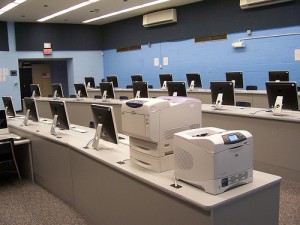By Sara Nolan
A few weeks ago, the Department of Education introduced its Digital Promise, an initiative to invest in “breakthrough technologies" aimed at transforming the way teachers teach and students learn. Though the message from the top about the importance of leveraging technology seems to be clear, it's a different story on a local level.
A recent SIIA study indicates a decline in what had been steady progress toward schools and universities building technology and e-learning into their frameworks. Karen Billings, vice president for Education for the Software & Information Industry Association (SIIA), links this change in part to the economic climate. She notes that it's not just budget cuts, but also the emotional impact of those cuts -- and of prolonged economic hardship in general -- that's affecting how schools buy and integrate technology.
“I liken it to the situation that many companies are finding themselves in,” she says. “Even if they find themselves with some money in the bank, they're waiting longer before making any decisions about what to do with it. They are too nervous about the future.” Particularly when it comes to bringing in new technology, she says, schools are taking a longer time to evaluate the products and their potential impact and long-term viability because they think “they can’t afford to make the wrong decision.”
In this highly charged context, however, sometimes even the right decision can seem like the wrong one. “There is definitely a problem in communication of those programs,” Billings says. She's referring to the flack that schools face when community concerns – and media headlines – focus on issues like budget cuts, layoffs, and overcrowding. “Computers in the classroom might be right for one school in a district while at the same time they’re needing to close another school because it’s under-performing or under-enrolled. But once it hits the papers, it’s ‘They’re closing schools and adding computers.’”
As the PTO co-president from tech-rich, budget-embattled Kyrene recently put it in the New York Times article, “You don’t go buy a new outfit when you don’t have enough dinner to eat.” This is recession psychology, and it has a powerful hold on the way we will fund technology in education going forward.


